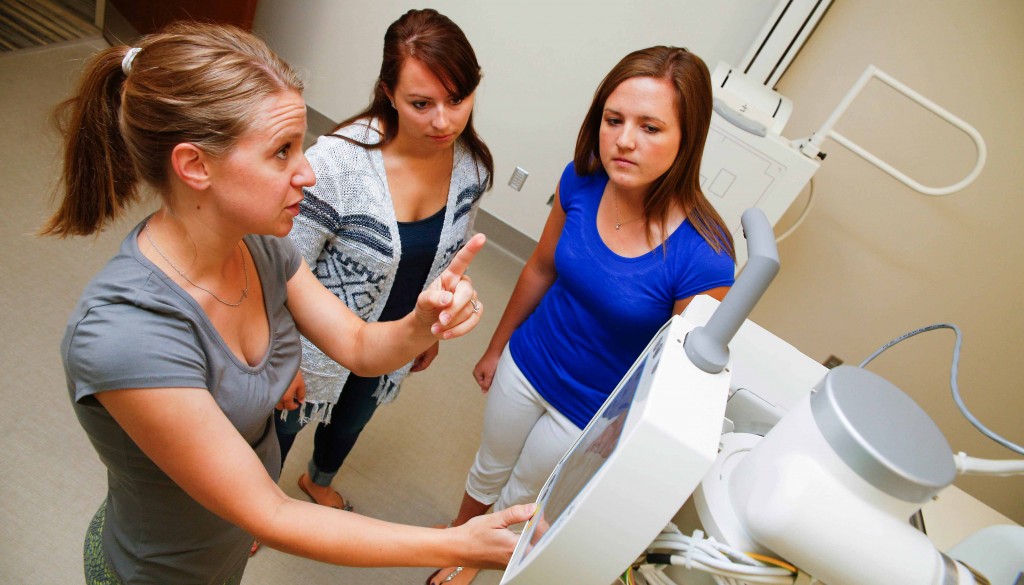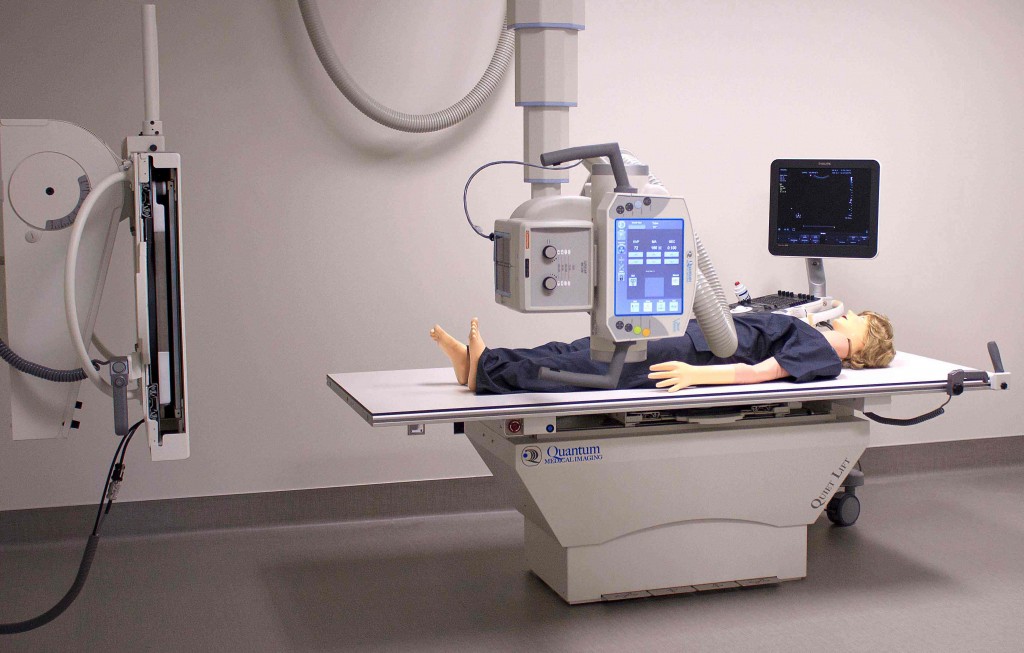
By SARA GIBONEY
UNK Communications
KEARNEY – Growth is inevitable from the new Health Science Education Complex, according to University of Nebraska at Kearney Chancellor Doug Kristensen.
“I really do see the day we cut the ribbon as the day we begin to plan what’s next,” he said.
The new $19 million University of Nebraska Medical Center – UNK Health Science Education Complex will host its grand opening, ribbon cutting and public tours at 11:15 a.m. Aug. 20.
At the complex, the UNMC College of Allied Health Professions will bring to the UNK campus new programs for physicians assistants, physical therapists, clinical laboratory scientists, medical nutrition, radiographers and diagnostic medical sonographers. The UNK and UNMC College of Nursing will expand its bachelor of science in nursing and graduate program for nursing.
“Everybody from the governor and legislature, to the Board of Regents, president and chancellors was on board with this. It’s been a great collaboration from the start, and to be honest that is unique within the university system,” said Greg Karst, UNMC College of Allied Health Professions assistant dean for academic and student affairs. “This has played very well. This is how the university system should work. This project serves as a model of what can and should be done, and the type of cooperation that should be occurring among our campuses.”
UNK has offered the UNMC nursing program since 1991, and has offered nursing majors since 1977.
“The key to success is collaborating,” Kristensen said. “The strength in UNMC’s quality programs and our ability to recruit students and our strong undergraduate education is a nice combination, and one that works.”
The collaboration will change the future of health care in rural Nebraska, he said.
“Rural Nebraska has huge public health needs. The medical center is particularly strong in public health. Kearney will become the center for healthcare education. The medical center serves the state very well in cutting- edge research, but we can be the delivery forum for the education. The sky is the limit for what’s going to happen in the future,” Kristensen said.
The new Health Science building and programming will help create positive exposure for both the UNMC and UNK campuses, build their reputations, attract quality faculty and students and serve as a national model.
“It’s going to be great for the region, but if we start looking around the country there are few other places that are doing this for rural health care. We’re offering high-quality professional programs, and training people where they will eventually work. I think it’s a great national model,” Kristensen said.

Growth is inevitable
Kristensen said the Health Science Education Complex won’t be used at its capacity this academic year. It will take three to five years to develop classes, recruit students and hire new faculty.
The College of Nursing and the College of Allied Health Professions will share classrooms and laboratories. The gross anatomy lab will be utilized by UNK faculty and students. Students in pre-health programs will have opportunities to participate in service learning, special seminars and hands-on simulation.
Nursing, Allied Health, and UNK faculty are also devising strategies for their students to benefit from curriculum offered by UNK in business, education, behavioral health and humanities.
The Kearney Division College of Nursing enrollment is expected to increase from approximately 120 to 176 students by the 2019-2020 academic year. Over 300 health professions students will be enrolled in Nursing and Allied Health Professions programs in 2019-2020.
“Growth is inevitable,” Kristensen said. “Our problem will be figuring out how to adapt.”
Kristensen said public health, mental and behavioral health and pharmacy are all potential programming opportunities.
A focal point in Kearney
“This will be transformative for UNK faculty, staff and students. And as UNK goes, so goes our community, so it will also be very transformative for the city of Kearney,” said Alan Wedige, UNK campus architect. “(Health Science) is going to become an anchor for much of the future development of west Kearney, and definitely for the University Village project we have planned here at UNK.
“It is going to be transformative in an economic way, a cultural way and a linkage of all those things in our community.”
The Health Science Education Complex is directly north of the entrance to the future University Village, 104 acres southwest of UNK’s campus on the south side of Highway 30 that will eventually house academic, retail, office, residential and recreation facilities.
Kristensen said it will be important to build University Village in a way that supports Health Science.
Students taking classes in Nursing or Allied Health may be interested in more independent campus housing. University Village will feature UNK and private and business entities. It will be a community where university faculty, staff and students, retirees and others wanting to locate nearby can live and work adjacent to campus, in townhouses, apartments and single-family dwellings, and have walking access to neighborhood businesses.
-30-